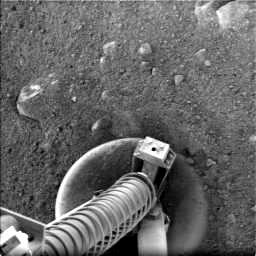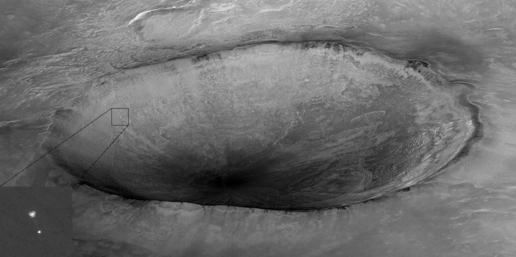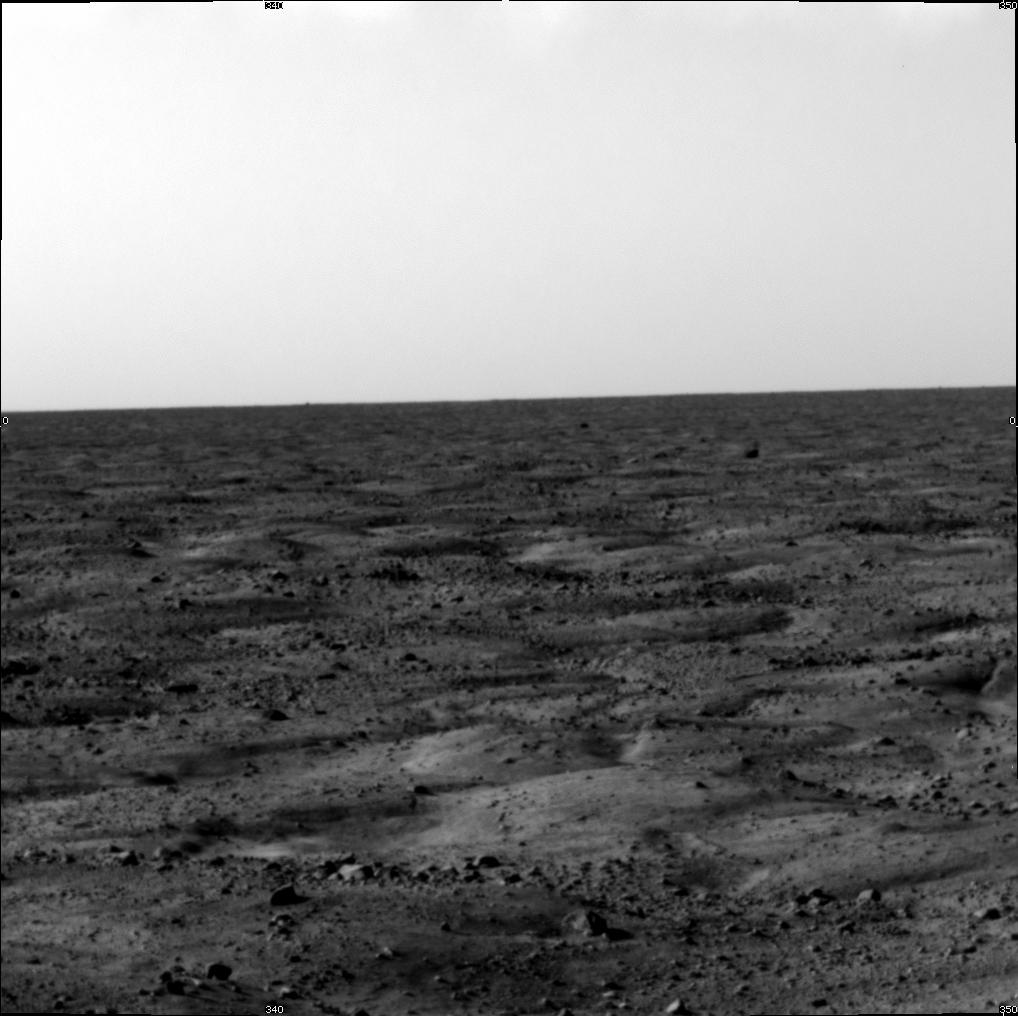The Phoenix Has Landed
The Phoenix Mars polar lander successfully touched down near the Martian north pole on Sunday May 25, 2008 around 4:35 in the afternoon PDT. More photos can be found here.
I had the pleasure of attending a real-time event hosted by the Cal Poly Astronomy Club and led by my friend and colleague Dr. John Keller of the Physics Department at Cal Poly in San Luis Obispo, CA. The live presentation was rather exciting and included a prepared video that simulated what was happening to the lander in real time as it underwent its trials and tribulations coming down from orbit at over 12000 miles per hour to a state of rest (gently!) on the surface. Of course, no real live feed of that nature was possible, but the simulation put your imagination into the right place, forcing you to visualize the events as they unfolded. There is a lag time of about 15 minutes from Mars because of the finite speed of light (i.e. in this context, radio signals), so the video was timed to end at just about the time the first real signals would be coming back from the lander, which we watched via a live feed from NASA JPL’s control room.
A successful Mars landing is non trivial. The slightest thing can cause catastrophic failure under such hostile and remote conditions, evaporating several thousand person-years of work in an instant. You only get one chance. Mars exploration is tricky business and has been marred with both the thrill of victory and the agony of defeat (in contrast, Moon missions have been remarkably successful). The Phoenix is named metaphorically for the lost 1999 Mars Polar Lander “risen from the ashes.” The Polar Lander crashed into the surface because the onboard computer mistook the jerking motion of the deploying landing gear as a signal for contact with the ground, which threw the automated mission timing into a tailspin.
Although the simulations were inspiring and got the room of 200 students, educators, and families excited and cheering, there was this real sense that until we heard that first diagnostic signal from the lander indicating its solar panels had deployed and were supplying power, the mission was riding on the edge of doom. As each element of the mission successfully unfolded, shouts of glee and applause filled the room as if we were watching a multi-act play. We laughed nervously and empathetically as we watched NASA JPL project manager Barry Goldstein visually compress under the moment-to-moment stresses with his exaggerated facial and hand gestures. We were all with him, but it wasn’t our careers on the line… Below is an amazing picture taken from the Mars Orbiter HIRISE camera of the Phoenix lander descending by parachute onto the surface. This was only one of several complex logistical operations required for a successful landing (in mere moments, the parachute will be released and the lander sent into freefall before the landing rockets are activated).
It is the first mission to perform a soft landing on Mars since the Viking lander missions in the mid-70s. All the (successful) Mars missions since then have been hard landings with airbags. Phoenix is also the first lander whose science mission will be operated through a university (University of Arizona at Tucson — ironic the Phoenix name, no?) rather than NASA. However, JPL in Pasadena, CA did oversee the landing operations on Sunday (not something you want academics in charge of; take it from me). Unlike the rovers Opportunity and Spirit, which are still jamming around somewhere on the surface, Phoenix is a stationary digger with only an anticipated 3 month mission lifetime.
The Martian polar caps near the lander (shown below) contain frozen water as well as dry ice which are as hard as concrete. Studying the polar cap region up close for the first time will give chemists a chance to study the properties of the polar soil chemistry, which may contain secrets about the Red Planet as well as possible clues about past (or current!) microbial life on Mars. As the hypothesis goes, where there is frozen water, there was almost certainly liquid water. And where there is liquid water, there was (is?!) almost certainly life. The polygon-like landscape at the Martian poles, seen below, is very similar to the geometry that can be seen near our own poles (ice wedges near Tuktoyaktuk, Canada) due to stresses produced by continual seasonal warming and thawing of ice sheets. The extent to which Martian ice actually melts to create liquid water is a major point of investigation for Phoenix. As Keller told me, “We actually don’t know to what extent the ice has ever melted. You could imagine a scenario in which ice snows out of the sky and forms ice sheets but it never gets warm enough at the poles to melt into a liquid. Rather, any exchange with the atmosphere could occur through sublimation. So this is one of the key things Phoenix hopes to pursue — the extent to which the water ice found there has ever melted into a liquid.”
Along with the digger, designed to plunge into the tough Martian permafrost, the lander has some automated wet lab chemistry capabilities with a mass spectrometer (ah, who needs chemistry grad students anymore) which will allow it to “smell” the Martian soil and determine what is in it. Phoenix also has a small meteorological station which will be able to provide Martian weather reports near the pole. It is currently Martian summer at the north pole, but in about 4 months the lander will be completely encased in a block of dry ice as the Martian poles expand through winter, effectively destroying the 450 million dollar remote laboratory.
Details about the Phoenix science mission can be found at the University of Arizona mission website and on Wikipedia. The mission has been covered elsewhere in the media at length, but it was a wonderful experience to be a part of the excitement with my friends and colleagues at Cal Poly. It also brought me back to the thrill of my own days at NASA-Ames from the late 80s and early 90s when I seriously dabbled with a planetary science career path (I’ve since turned to much darker arts).
Congratulations to the JPL team for a successful landing and all the best to the university and NASA science teams in the coming months. Also, thanks to Dr. John Keller for leading the successful Cal Poly Phoenix event!


